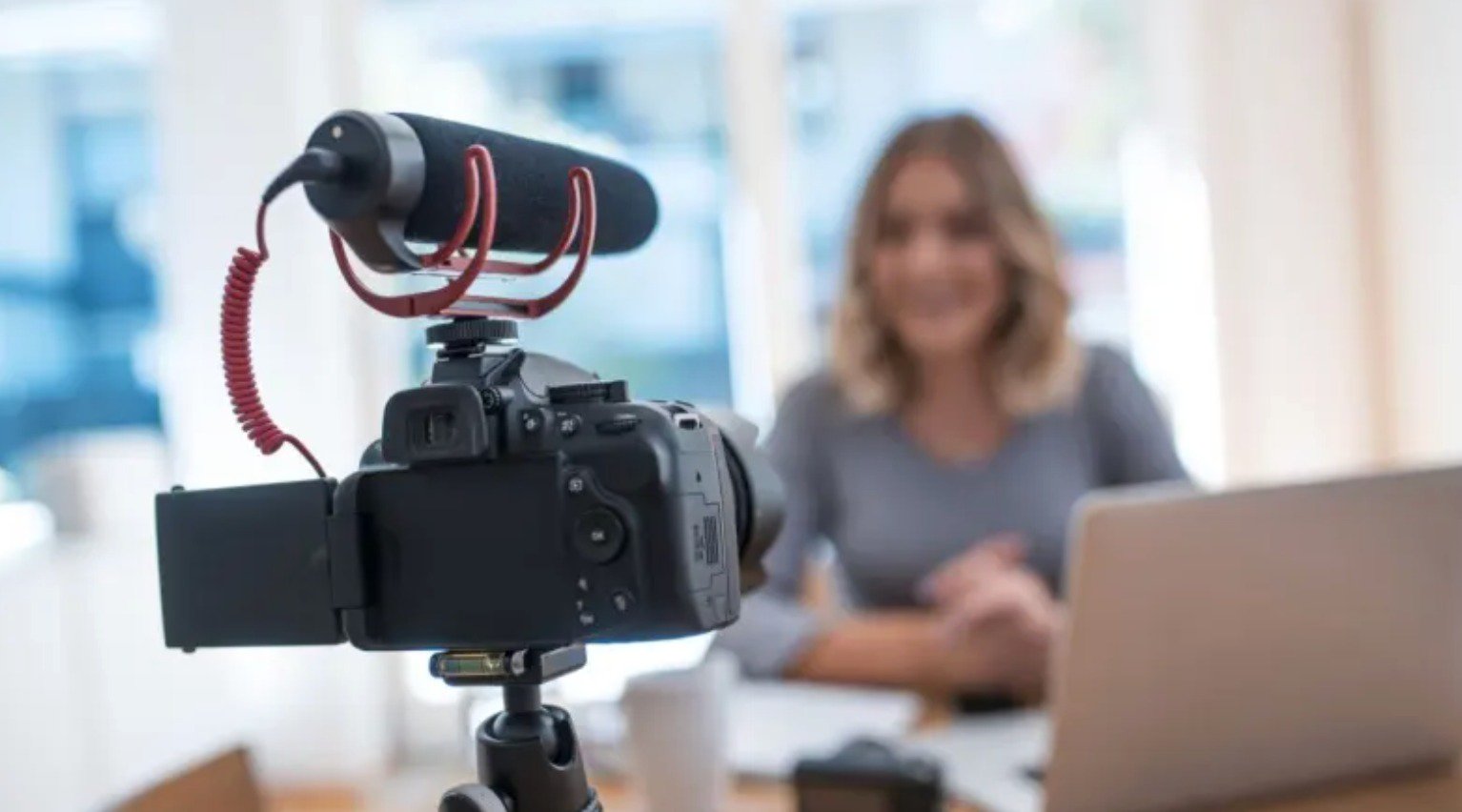Creating a great video is only half the job. The real impact comes from how you share it.
A smart video distribution strategy amplifies your video marketing efforts, helping your content reach the right target audience, building awareness, engagement, and measurable ROI.
According to Wyzowl’s most recent data, 91% of businesses use video as a marketing tool, and nearly 89% of marketers report a strong ROI.
At Levitate Media, we help businesses turn great production into real results by pairing expert storytelling with smart, data-driven video marketing strategies.
What Is Video Distribution?

Video distribution is the process of getting your videos in front of the right people through the right channels. It’s how businesses share their video content across social media platforms, websites, email, and other video distribution channels to boost visibility and engagement.
Think of it as the bridge between production and performance. Even the most well-produced video won’t deliver results if your audience never sees it. It also means encouraging others to share your video content across their own preferred channels, expanding your reach beyond your primary platforms. A strong video distribution strategy makes sure your content reaches your target audience effectively, turning views into clicks, and clicks into conversions.
For companies investing in corporate video production, distribution is a key part of the process. It ensures your message reaches clients, stakeholders, and customers helping you build trust, increase brand visibility, and support long-term marketing goals.
How to Maximize Video Distribution
Before choosing a distribution channel, you need to understand how to use video distribution tactics to maximize your reach and engagement.
SEO Optimization
The best way to ensure your video is found organically is by optimizing your video SEO.
- Optimize video file name, titles, and descriptions: The title and description of the video should include keywords relevant to the content. This helps various search engines understand what the video is about and makes it more likely to appear in search results.
- Use video transcripts: Adding a transcript of the video's audio can help search engines understand the content of the video. It's also a great way to make your video accessible to more users.
- Use sitemaps and Schema markup: Video sitemaps are files that contain the title, description, and URL of the video. Schema markup is a type of code that can be added to a video . These are important additions to descriptive titles and help search engines understand the content and improve your video’s visibility.
Social Media Sharing

When it comes to distributing video content, not every platform is created equal.
Each social media platform has its own audience, tone, and preferred format. For corporate brands, LinkedIn and YouTube typically deliver the best ROI. Both platforms attract professional viewers who are actively searching for valuable insights, case studies, and brand storytelling.
Customize each post to fit the channel and other social media sites. Optimize video dimensions, use concise captions, and include a clear call-to-action. Then, use analytics tools to measure what performs best and refine your distribution strategy over time.
For B2B brands, LinkedIn and YouTube often deliver the best ROI for video distribution.
Strategic Partnerships and Thought Leadership
In B2B marketing, partnerships often outperform traditional influencer campaigns.
Collaborate with industry experts, strategic partners, or existing clients to co-promote your video content. Executive interviews, webinars, and joint announcements are excellent ways to expand reach within professional networks.
When you align with voices your audience already trusts, your video distribution channels instantly become more powerful. It’s less about popularity, and more about credibility and relevance.
Live video is another marketing tactic that can help increase interaction and engagement with viewers. Pairing this with an influencer collaboration can help make your video distribution strategy more successful. Viewers spend more time watching live video compared to video on demand.
Paid Video Advertising

Paid video advertising is another content distribution tactic it helps you distribute your video efficiently. Various video distribution channels allow you to run video ad campaigns, including YouTube, Facebook, Instagram, and LinkedIn. Most paid video platforms follow a similar process for setting up video ad campaigns.
- Choose a platform: Select the platform where your target audience is most active.
- Create a campaign: Set up a campaign and select “video” as the ad format.
- Select your audience: Define your target audience by demographics, interests, behaviors, and more.
- Create the ad: Upload your marketing video and add a headline, description, and call-to-action.
- Set a budget: Pricing for your ad will depend on the length of time the ad is shown, how large your audience is, and your desired ad placement.
- Launch the campaign: Once your ad is ready, launch the campaign and monitor its performance.
- Analyze and optimize: Analyze the campaign's performance and optimize it to improve results. Paid ads are a great way to learn for future campaigns.
A strong video distribution strategy blends owned, earned, and paid distribution channels, from your website and email list to social platforms and ad campaigns. The goal is to make your video work across every touchpoint where your audience already spends time.
Important Metrics for Measuring Video Distribution Effectiveness

A strong video distribution strategy isn’t just about where you share, it’s about what results you get. Track these key performance indicators (KPIs) to measure how well your video content performs across different channels.
- View Count: The most basic indicator of performance, view count shows how many people watched your distributed video. High view counts suggest good reach, but deeper metrics reveal true engagement.
- Watch Time: This measures the total amount of time viewers spend watching your video content. Longer watch times indicate that your message and storytelling are holding attention.
- Engagement Metrics: Likes, comments, shares, and click-throughs reveal how audiences interact with your videos. Strong engagement means your video distribution strategy is connecting with the right audience.
- Conversion Rates: For videos with clear calls to action, conversion rates show how well viewers move from interest to action: like signing up, booking a demo, or contacting your team.
- Referral Traffic: Tracks how much traffic your video drives to your website or landing pages. High referral traffic means your video is effectively leading viewers to explore your brand further.
- ROI (Return on Investment): Compares production and distribution costs against leads or sales generated. A positive ROI shows your video distribution efforts are driving measurable business results.
Best Video Distribution Platforms to Drive Traffic and Engagement

Even the best videos won’t make an impact if no one sees them. Choosing the right video distribution channels helps your content reach new audiences, build brand awareness, and strengthen your overall video marketing strategy.
Here are some of the most effective video distribution channels to share your video content:
YouTube
YouTube remains the most powerful video distribution platform for both visibility and SEO. With billions of active users, it’s where audiences go to learn, explore, and make decisions.
In fact, Google’s B2B Insights Report (2024) found that more than 70% of B2B buyers watch videos during their decision-making process, making YouTube a vital channel for reaching potential customers before they buy.
For B2B companies and professional YouTube creators, the platform acts as both a search engine and a credibility builder. Brands like HubSpot, Salesforce, and Adobe use it to share tutorials, product demos, and thought-leadership content that drives long-term engagement.
How to make YouTube work for your business:
- Use keyword-rich titles and video descriptions that align with your audience’s search intent.
- Add interactive elements, like end screens or clickable cards and clickable links in the description to drive traffic to your landing page or news website.
- Organize your video content into playlists for easier viewing and higher retention.
- Include transcripts and closed captions for better accessibility and SEO.
- Use YouTube built in analytics tools to track engagement and discover what performs best.
Vimeo
Vimeo is a professional video hosting platform that gives businesses more control over branding, privacy, and analytics. It’s ad-free and designed for high-quality video content distribution.
Outdoor brands like Patagonia use Vimeo for storytelling, while B2B companies, especially tech and SaaS brands: use it for webinars, demo videos, and training content.
Why businesses choose Vimeo:
- Offers ad-free playback and strong privacy settings.
- Integrates easily with CRMs and websites to capture leads.
- Provides robust analytics support tools for tracking KPIs.
- Supports live streaming gameplay for product launches or internal events.
- Delivers detailed reports that help refine your video distribution strategy.
Facebook isn’t the SEO powerhouse it once was, but it remains valuable for brand storytelling and community engagement.
Companies like Cisco and Microsoft use Facebook to share internal culture videos, event recaps, and leadership updates that showcase authenticity.
Best ways to use Facebook for video:
- Share culture and behind-the-scenes videos to humanize your brand.
- Post recruitment and events highlight videos to attract talent.
- Use paid advertising or sponsored posts to extend your reach.
- Engage with comments and direct messages to build brand loyalty.

Instagram’s visual-first format makes it ideal for storytelling through short-form video clips.
It’s not just for lifestyle content, many B2B brands use it to highlight company culture, customer success, and thought leadership.
How to use Instagram for business video marketing:
- Post Reels for quick, eye-catching stories or product teasers.
- Share behind-the-scenes videos that show your creative process or workplace culture.
- Use Stories to highlight company milestones, projects, or team wins.
- Add captions and hashtags to improve visibility and engagement.
TikTok
TikTok continues to grow as a space for brand discovery and creative storytelling. Even B2B companies are finding ways to connect through authentic, quick content.
Ways to use TikTok for business:
- Share short insights, team moments, or thought-leadership snippets.
- Join relevant hashtag trends to improve discoverability.
- Showcase your team, process, or company story in an approachable way.
- Keep it genuine, authenticity often outperforms perfection.
Your Website
Your website is your most important owned distribution channel.
Embedding videos directly on your pages helps improve SEO performance, keeps visitors on your site longer, and supports conversions.
Best practices for website video distribution:
- Embed videos on product, service, or case study pages to educate visitors.
- Add videos to blog posts to boost engagement and click-through rates.
- Create dedicated landing pages for high-value videos like testimonials or explainers.
- Use schema markup and keyword-rich descriptions to improve ranking in search engines.
Email is still one of the most effective video distribution methods for driving conversions and building relationships.
Personalized video emails can help you connect with leads, announce updates, and improve campaign performance.
Ways to use video in email marketing:
- Add a video thumbnail or GIF with a play button to encourage clicks.
- Send short, personalized clips for onboarding or client updates.
- Include customer testimonials or case studies to build trust.
- Use A/B testing to compare engagement with and without video.
- Track metrics like open rates, CTR, and conversions for valuable insights.
Adding video to email campaigns can increase click-through rates by up to 200%. See how Levitate helps brands integrate video across touchpoints through our Video Production Services.
Choose the Right Video Distribution Tactics to Reach Your Goals
A great video deserves to be seen. But visibility doesn’t happen by chance, it happens through strategy.
A smart video distribution strategy helps your video content reach the right audience, increase brand awareness, and generate measurable results. By using the right video distribution channels, from your website and email to social media platforms and paid campaigns, you can keep your message working long after production wraps.
FAQs About Video Distribution Strategies
How do you measure the success of a video distribution campaign?
Track key performance indicators (KPIs) like views, watch time, engagement rate, and conversions. Tools such as YouTube Analytics and Google Analytics show where your audience is coming from and which video distribution channels drive the best ROI.
How does video distribution improve SEO?
Videos boost your business’s SEO performance by increasing time on site and visibility in search engine results. Embedding videos on landing pages and optimizing titles, descriptions, and schema markup helps search engines understand your content. Learn more in our guide on Video SEO Services.
What type of videos should businesses distribute?
Businesses see the strongest ROI from sharing brand videos, explainer videos, testimonials, and case studies. Each type connects with audiences at different stages of the customer journey and helps build trust with potential clients. Explore examples in our Corporate Video Production Services.
What are the most effective paid channels for video distribution?
For B2B marketing, LinkedIn Ads, YouTube TrueView, and programmatic ads are top performers. These platforms allow precise audience targeting and ensure your video content reaches decision-makers who are most likely to engage.
How can video help improve brand awareness?
Videos capture attention faster than text and are easily shareable across social media platforms and email. Consistent posting builds recognition, trust, and authority, key to long-term brand visibility.
A great video deserves more than views, it deserves results.
If you want to get more out of your video marketing investment, let’s make it happen. Partner with Levitate Media to create, optimize, and distribute professional videos that drive awareness, engagement, and real business growth.
If you’re ready to get more ROI from your video content, let’s create a video distribution strategy that works. Contact us and turn your message into momentum.









